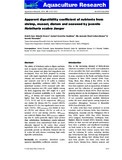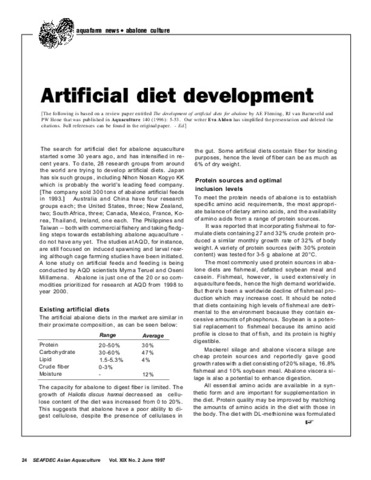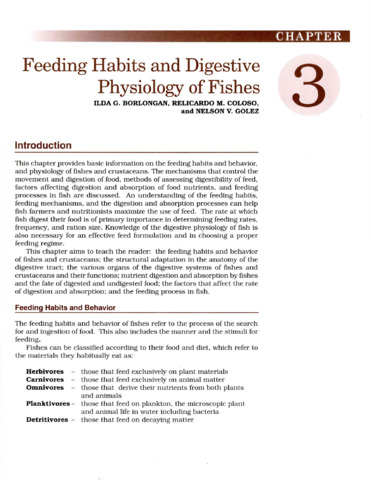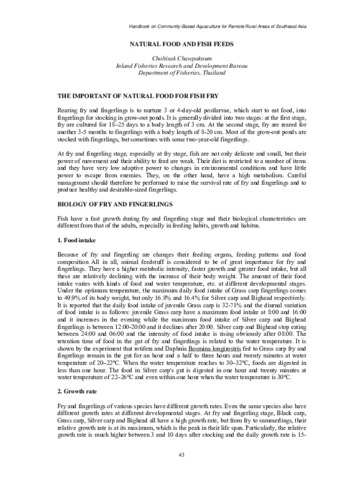Apparent digestibility coefficient of nutrients from shrimp, mussel, diatom and seaweed by juvenile Holothuria scabra Jaeger

View/Open
Date
2014Author
Page views
284Metadata
Show full item recordCited times in Scopus
59 readers on Mendeley
- Citations
- CrossRef - Citation Indexes: 12
- Scopus - Citation Indexes: 18
- Captures
- Mendeley - Readers: 59
Share
Abstract
The ability of Holothuria scabra to digest nutrients, such as organic matter (OM), protein and carbohydrate from animal and plant feed ingredients was investigated. Four test feeds prepared by mixing sand with single ingredients from animal sources (shrimp and mussel) and plant sources (diatom and seaweed) were fed to H. scabra to estimate apparent digestibility coefficient (ADC). The total assimilated nutrient (TAN) increased with ADC, whereas ingestion rate (IR) varied slightly among the feeds suggesting that ADC might be a good indicator of nutrient availability to H. scabra. The ADCOM of shrimp and mussel was significantly higher than that diatom and seaweed: 86.2%, 77.1%, 55.1% and 32.3% respectively. ADCprotein was similar for shrimp (88.7%), mussel (84.8%) and diatom (75.2%), but significantly lower in seaweed (34.4%). ADCcarbohydrate was similar in mussel (58.5%) and diatom (58.3%) as well as in seaweed (31.6) and shrimp (28.0%). ADCprotein was relatively higher than ADCcarbohydrate suggesting that H. scabra generally digests more protein than carbohydrate. Furthermore, results indicated that nutrients from animal-based feeds are more efficiently digested by H. scabra; thus, animal ingredients rich in easily digestible protein could potentially provide an efficiently balanced diet for H. scabra fed with diatom containing high easily digestible carbohydrate.
Suggested Citation
Orozco, Z. G. A., Sumbing, J. G., Lebata-Ramos, M. J. H., & Watanabe, S. (2014). Apparent digestibility coefficient of nutrients from shrimp, mussel, diatom and seaweed by juvenile Holothuria scabra Jaeger. Aquaculture Research , 45(7), 1153-1163. https://doi.org/10.1111/are.12058
Subject
Collections
- AQD Journal Articles [1248]
Related items
Showing items related by title, author, creator and subject.
-
Artificial diet development [for abalone]
Aldon, Eva (Aquaculture Department, Southeast Asian Fisheries Development Center, 1997) -
Feeding habits and digestive physiology of fishes
Borlongan, Ilda G.; Coloso, Relicardo M.; Golez, Nelson V. (Aquaculture Department, Southeast Asian Fisheries Development Center, 2002)This chapter provides basic information on the feeding habits and behavior, and physiology of fishes and crustaceans. The mechanisms that control the movement and digestion of food, methods of assessing digestibility of ... -
Natural food and fish feeds
Chawpaknum, Choltisak (Secretariat, Southeast Asian Fisheries Development Center, 2008)Rearing fry and fingerlings is to nurture 3 or 4-day-old postlarvae, which start to eat food, into fingerlings for stocking in grow-out ponds. It is generally divided into two stages: at the first stage, fry are cultured ...




